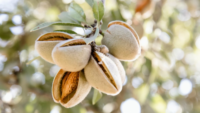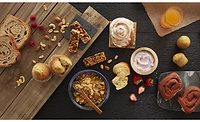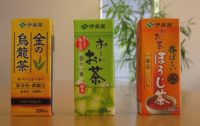“Natural” or “clean-label” are terms that are becoming increasing popular with both consumers and food companies. Antimicrobials are necessary food additives: They not only inhibit the growth of (or kill) pathogenic bacteria that can cause foodborne illness, but they also inhibit spoilage microorganisms, allowing processors to extend the shelf life of their products, thus increasing the time available to ship and distribute products to retailers. Those same products can then stay on the shelf at stores until bought by consumers and still last for days or sometimes weeks once stored at home by the consumer.
Since antimicrobials extend the shelf life of food, they are considered preservatives. This term has a somewhat negative connotation with consumers, and the assumption is that preservatives are unhealthy or dangerous. Obviously, if food companies want to continue to produce safe and high-quality products but appeal to consumer demand for clean-label products, they must consider natural antimicrobial alternatives.
There are several types of natural antimicrobials from which to choose. In particular, plant- and bacteria-based antimicrobials have come under a lot of scrutiny as potential alternatives. Plant-based antimicrobials are familiar and easily recognizable to consumers, but there are issues with using plant-based alternatives. First, many plant extracts have a very strong flavor and/or aroma, which could negatively affect the sensory properties of the food.
Also, some plant extracts have a high minimum inhibitory concentration, making their use uneconomical, as well as leading to potential toxicity issues. In addition, even if the extract is effective, does not negatively affect sensory properties and is safe, there could still be issues with consumer acceptance. In 2011, for example, Maple Leaf Foods came under fire in Canada because of the labeling for its Natural Selections line of deli meats. The product was labeled as preservative-free and listed cultured celery extract as an ingredient.
The problem was that, unbeknown to your average consumer, celery extract is a natural source of nitrite, an ingredient some people avoid because of its potential carcinogenic effects. In this case, the issue was not just that consumers wanted a product with natural ingredients; they also wanted to avoid a particular compound, regardless of its source. Maple Leaf was accused of trying to mislead consumers and disguise the nitrites in the product, leading the company to change its label to include naturally sourced nitrite.
Another source of natural antimicrobials is bacteria. This is a promising alternative, as some of these microorganisms already have generally recognized as safe (GRAS) status with the U.S. Food and Drug Administration (FDA): “Under sections 201(s) and 409 of the Federal Food, Drug, and Cosmetic Act…, any substance that is intentionally added to food is a food additive, that is subject to premarket review and approval by FDA, unless the substance is generally recognized, among qualified experts, as having been adequately shown to be safe under the conditions of its intended use, or unless the use of the substance is otherwise excepted from the definition of a food additive.”[1]
An article in the December 2016/January 2017 issue of Food Safety Magazine by Chaves and Brashears[2] highlighted the use of one of the groups of bacteria that has several members with GRAS status: lactic acid bacteria (LAB). Several LAB have been used as starter cultures in food fermentation and also have been isolated from food products.
Forms of Biopreservation
This use of microorganisms or the compounds they produce to extend shelf life and increase safety is known as biopreservation. The microorganisms produce acid, bacteriocins and other inhibitory compounds. Bacteriocins are small antimicrobial peptides, and many of those made by LAB are active against microorganisms that are closely related to the producing culture. Biopreservation could entail adding the organisms themselves to the food product, where they will consume the carbohydrates and other nutrients present and produce acids and other inhibitory compounds.
The second option is to use something called a fermentate. In this case, the organism is added to a nutrient solution such as sugar water or milk and allowed to grow, producing the inhibitory acids and metabolites. This entire mixture of organic acids, sugars, peptides and aromatic compounds is then added to the food. This affords the benefit of initial reduction of microorganisms, as the inhibitory compound is already present at the initial addition of the product, unlike the addition of the organism alone, in which the metabolites build up as the organism grows in the food.
Additionally, a partially purified mixture can be added. This would be an antimicrobial with a higher activity, as the inhibitory compounds have been concentrated. Finally, a purified bacteriocin can be added. This would have the highest antimicrobial activity of all of the options, but it is the most expensive and there have not been many purified bacteriocins approved for use in food in the United States.
There are several commercially available products in each of these categories. These include live cultures of Carnobacterium maltaromaticum, LAB and other microbial fermentates, a partially purified antimicrobial in which the active component is natamycin, a crude fermentate of Pediococcus that includes the bacteriocin pediocin and the purified bacteriocin nisin.
Each antimicrobial is suited for use in specific food products, ranging from juices to baked goods, cheese and other dairy products. Suitability depends on the pH of the food product and the target microorganisms the processor is trying to inhibit. For example, because natamycin is antimycotic, it is suitable for spraying on baked goods to reduce the development of surface spoilage mold, while live cultures of C. maltaromaticum are useful in refrigerated ready-to-eat meats because it inhibits the pathogen Listeria monocytogenes.
Continued Research into Biopreservation
Although several biopreservative products are on the market, research continues in the area. Current research involves using microorganisms from sources other than fermentation or food isolates, such as soil and animals, or combining several different cultures or purified antimicrobials to create an optimal blend.
The road from the lab to the marketplace can be a long one. Once the antimicrobial activity of organisms and/or inhibitory compounds has been tested and confirmed against an array of target organisms in vitro, the compounds are then tested in a model food system. Microbial activity is usually decreased considerably because of interaction with the nutrients, components and matrix of a food. For this reason, most biopreservatives work best when combined with other hurdles such as low pH, refrigerated storage or other antimicrobials.
Sensory and safety tests are then necessary to determine if the product is appropriate for use in food. Following this, analysis of the cost, suitability for scaled-up production and refinement of the delivery system are needed to determine whether the product would be feasible for use in commercial food production.
Biopreservation is a feasible solution for food companies trying to increase their range of natural products. However, it is important to research which form of biopreservative is most appropriate for your product and any potential regulatory or labeling issues that could arise.
Emefa Monu, Ph.D., is an assistant professor of food science at Auburn University and a member of the Auburn University Food Systems Institute’s core faculty.
References
1. www.fda.gov/food/ingredientspackaginglabeling/gras/.
2. www.food-safety.com/magazine-archive1/december-2016january-2017/mitigation-of-ilisteria-monocytogenesi-in-ready-to-eat-meats-using-lactic-acid-bacteria/.
Other Resources
1. David, JR et al. 2013. “Expectations and Applications of Natural Antimicrobials to Foods: A Guidance Document for Users, Suppliers, Research and Development and Regulatory Agencies.” Food Prot Trends 33:238–247.
2. Davidson, P et al. “The Use of Natural Antimicrobials in Food: An Overview,” in Handbook of Natural Antimicrobials for Food Safety and Quality. Taylor, TM, ed. (Cambridge, UK: Woodhead Publishing, 2014), 1–19.
3. Monu, EA. “Antimicrobial Activity and Meat Colour Stabilizing Properties of Carnobacterium maltaromaticum” (Ph.D. thesis, University of Alberta, 2012).
4. O’Bryan, CA et al. “Lactic Acid Bacteria (LAB) as Antimicrobials in Food Products: Analytical Methods and Applications,” in Handbook of Natural Antimicrobials for Food Safety and Quality, 137–148.




